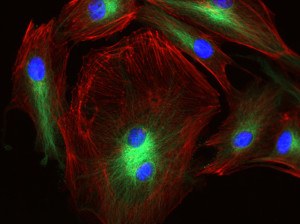Access The Tools Of Innovation At WVU Shared Research Facilities
Imagine having access to the same state-of-the-art instruments that elite scientists use to create the latest high tech materials or the next generation of drugs. The West Virginia University Shared Research Facilities can help scientists and entrepreneurs from other academic institutions, national or state laboratories, or from the private sector turn imagination into reality.
The same tools that WVU researchers use to develop materials to detect biomarkers of brain injury, to create a microfluidic liver-on-a-chip, and to produce catjstore more energy in smaller, lighter, longer lasting batteries are available to scientists and inventors at large for use at modest fees that help cover the cost of operation. Most fees are charged by the hour.
“Much of our equipment costs hundreds of thousands of dollars—out of reach for all but the most well-funded organizations. Our goal is to make the maximum use possible of this equipment to help promote discovery, innovation, and economic development,” said Trina Karolchik Wafle, SRF director. She joined the group in January 2015 and is eager to make the tools available beyond WVU. “Supporting economic development through discovery and innovation is part of our land grant mission.”
The WVU SRF managers, most who hold the Ph.D., will train anyone who has the proper background and basic skills to use the instruments themselves. The staff are also available to run sample analyses for those who may not have the time or expertise. “The flexibility to allow users to run their own samples means that we can offer very flexible hours that can help ensure deadlines are met,” said Wafle.
The SRF works with WVU’s Office of Technology Transfer to establish non-disclosure agreements when desired. Wafle, who has more than 30 years’ experience in energy and environmental research administration at WVU, can help identify potential research partners from among WVU’s faculty.
Some of the featured SRF instrumentation includes : Q-Exactive mass spectrometer, scanning and transmission electron microscopes, X-ray diffractometers, photoelectron spectroscope, FTIR spectrometer, white light ellipsometer, CD spectrometer, atomic force microscopes, spinning disk confocal microscope, digital inverted fluorescent microscopes, and a Raman microscope. WVU SRF offers a full complement of tools to prepare samples for these high-end instruments. For those interested in biological applications, the SRF also offers cell culture facilities.
Cleanroom space is available as well, and includes: one class 1,000 cleanroom and one class 10,000 cleanroom with 1160 square feet of clean space and accompanying support spaces capable of photolithography, deposition, MBE, and wafer dicing, and 2,100 square feet of clean space including class 100, class 1,000 and two class 10,000 rooms equipped with photo- and e-beam lithography, wet chemical processing, metallization and deposition, reactive ion etching, thermal processing and sample packaging, and scanning electron microscopy.
For more information and pricing, contact Trina Wafle at 304 293-6038 or visit http://srf.wvu.edu.

